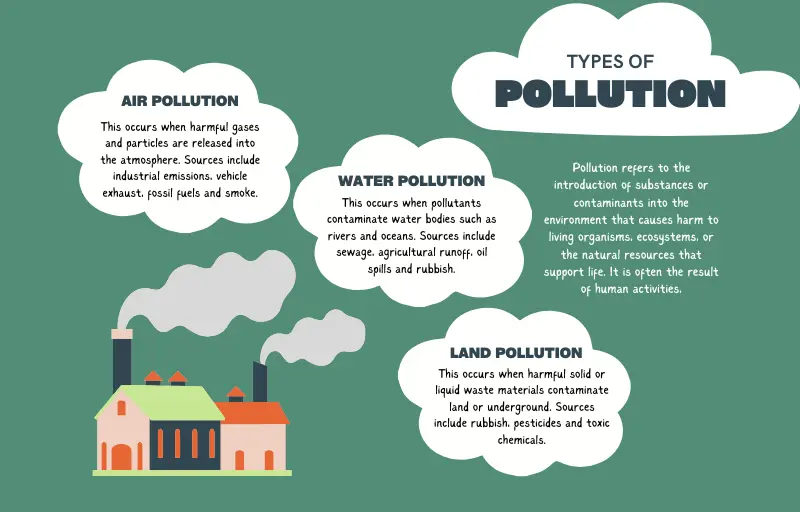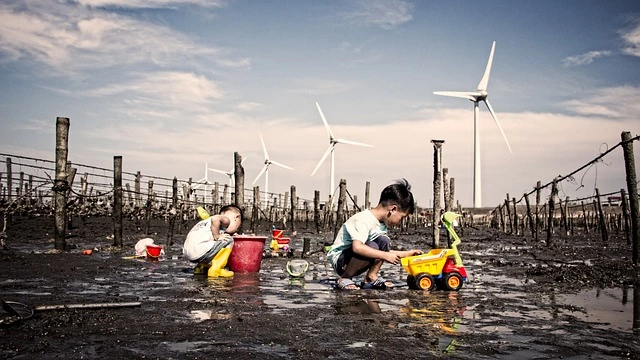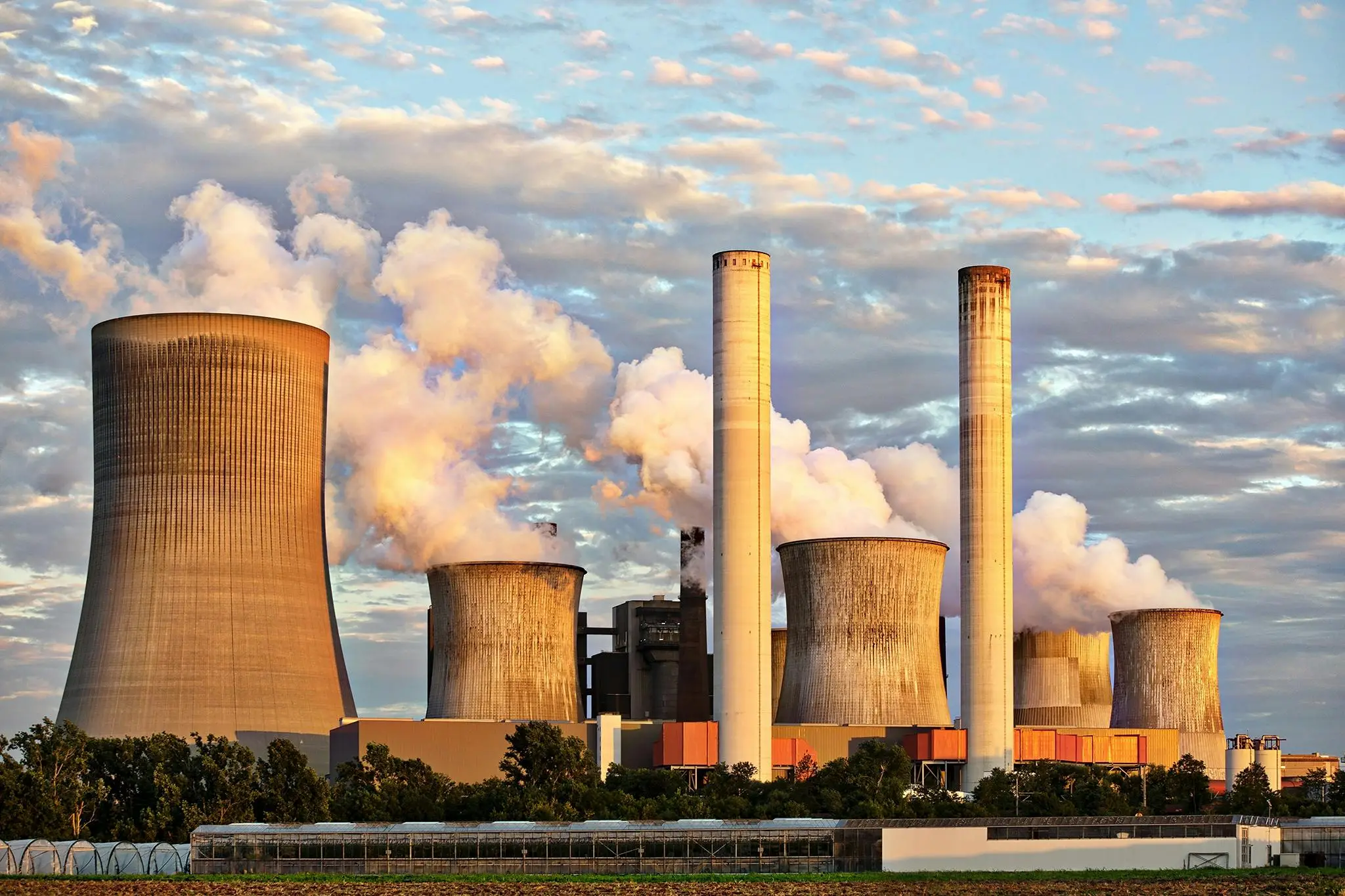Table of Contents
India is slowly moving toward becoming a developed nation — but at what cost? According to the 2024 report on the world’s most polluted cities, the top 10 cities are in India, and the country now ranks as the third most polluted nation globally. A major contributor to this alarming pollution level is industrial pollution.
In this article, we analyze industrial pollution in India — its causes, effects, real-life case studies, government laws, and examples of pollution control measures. Whether you’re a student, researcher, or concerned citizen, this blog will help you understand the seriousness of this issue and the urgent need for sustainable solutions.
What is Industrial Pollution?
Industrial pollution refers to the contamination of air, water, and soil caused by harmful substances released from industries and factories. These pollutants include toxic gases, chemicals, heavy metals, and other hazardous waste materials. Industrial pollution is one of the leading causes of environmental degradation and poses serious risks to human health and biodiversity.
This type of pollution can take various forms, including:

Air Pollution
In 2024, air pollution caused approximately 8.1 million deaths globally, making it the second leading risk factor for death. Industries release harmful gases, smoke, and other particulate matter into the atmosphere. This contributes to various serious health issues such as asthma, chronic obstructive pulmonary disease (COPD), lung cancer, and heart disease.
Water Pollution
Industries and factories release waste substances, chemicals, and other harmful materials into water bodies, making the water unsafe for human consumption and disrupting the lives of aquatic creatures. This pollution can cause several diseases such as cholera, polio, giardiasis, lead poisoning, and even cancer.
Soil Pollution
Industries release heavy metals and pollutants directly into the soil, leading to contamination. This polluted soil harms animals and plants and also contaminates groundwater, making it unsafe for use.
Thermal Pollution
Industries and certain power plants release massive amounts of heat into water bodies, which reduces oxygen levels and harms aquatic life. This also leads to significant changes in the ecosystem, disrupting its natural balance.
Noise Pollution
Some industries exceed safe noise levels due to heavy machinery and industrial processes. Prolonged exposure to such noise can lead to hearing loss, stress, and various other health problems.
Radioactive Pollution
Radioactive substances are released into the environment by nuclear power plants and certain industrial processes. This poses serious health risks, including cancer, and causes long-term damage to the environment.
Causes of Industrial Pollution in India
Listed below are the main causes of industrial pollution that harm our environment and health:
- Emission of Gases and Smoke: Industries release harmful gases and smoke into the atmosphere, leading to air pollution.
- Discharge of Waste into Water Bodies: Factories and industries release waste materials into rivers and lakes, disrupting aquatic life and contaminating water, resulting in water pollution.
- Lack of Proper Regulations: The absence of strict environmental policies allows industries to discharge pollutants without proper treatment or planning.
- Use of Outdated Technology: Many industries still rely on outdated technologies that emit large quantities of pollutants and waste into the environment.
- Unplanned Industrial Growth: The rapid growth of industries in certain areas without proper environmental assessment leads to severe pollution.
Industries Contributing to Industrial Pollution
- Power Generation: Power plants release large amounts of pollutants into the air, including smoke and particulate matter, which contribute significantly to air pollution.
- Cement Industry: These industries release dust and other pollutants into the air, affecting air quality and human health.
- Iron and Steel Industry: Iron and steel industries emit large quantities of air pollutants during production processes.
- Chemical and Petrochemical Industries: These industries discharge hazardous chemicals into both air and water, causing serious environmental damage.
- Pharmaceutical Industry: Pharmaceutical industries contribute pollutants to the environment through the release of chemical waste and residues.
- Tanneries: These industries cause water pollution by using harmful chemicals during the leather processing stage.
- Fertilizer Plants: Fertilizer plants release nitrous oxide, ammonia, and other pollutants into the air and water, contributing to both air and water pollution.
- Refineries: Oil refineries contribute to environmental pollution by discharging pollutants into both water and air.
- Food Processing Industry: These industries generate wastewater and use various chemicals, which contribute to water pollution if not properly treated.
Impact of Industrial Pollution on Human Health and the Environment

Industrial pollution affects both human health and the environment, polluting the air, soil, and water. Below is a discussion of its major impacts:
Impact on Human Health
- It causes serious diseases such as Chronic Obstructive Pulmonary Disease (COPD), asthma, lung cancer, and many more respiratory and cardiovascular illnesses.
- People living near industrial zones often experience a lower quality of life, facing social and economic challenges due to constant exposure to pollution.
- Contaminated soil due to industrial pollution can lead to serious health problems such as cancer, heart disease, skin disorders, and more.
- Long-term exposure to industrial pollutants can weaken the immune system, making people more vulnerable to infections and chronic diseases.
Impact on the Environment
- Contaminated soil affects agriculture and disrupts the food chain, leading to harmful exposure through crops.
- Polluted water from industrial waste harms aquatic life and also affects humans when this water is consumed or used.
- Industrial pollution contributes to global warming by releasing greenhouse gases into the atmosphere.
- Industrial processes produce excessive noise, which negatively affects the natural environment and wildlife.
Real-Life Cases of Industrial Pollution in India
1. Bichhri Village Case, Rajasthan
- Location: Udaipur District, Rajasthan
- Pollution Type: Groundwater and soil pollution
- Cause: Chemical factories in Bichhri village dumped untreated toxic waste.
- Impact: Over 60 wells were contaminated, crops destroyed, and villagers faced serious water scarcity for over 30 years.
2. Union Carbide Gas Tragedy (Bhopal Disaster)
- Year: 1984
- Location: Bhopal, Madhya Pradesh
- Pollution Type: Air and chemical contamination
- Cause: Leakage of methyl isocyanate gas from a pesticide plant owned by Union Carbide.
- Impact: Over 15,000 deaths and more than 500,000 people affected. Still considered the world’s worst industrial disaster.
3. Ganga and Yamuna River Pollution
- Location: Various cities across North India
- Pollution Type: Water pollution
- Cause: Discharge of untreated industrial waste and sewage into rivers.
- Impact: Polluted water sources, aquatic life destroyed, and health problems in nearby communities.
4. Vapi Industrial Area, Gujarat
- Pollution Type: Air, water, and soil pollution
- Cause: Industrial belt with chemical factories releasing toxic waste.
- Impact: Vapi was once ranked among the most polluted cities in India. Toxic groundwater and polluted air affected thousands.
5. Mettur Industrial Pollution, Tamil Nadu
- Pollution Type: Water pollution
- Cause: Industries along the Kaveri River released untreated effluents.
- Impact: Contaminated drinking water, agricultural loss, and health issues in local communities.
Real-Life Examples of Industrial Pollution Control
1. Namami Gange Programme – India
- Purpose: To reduce pollution and rejuvenate the Ganga River.
- Actions Taken:
- Construction of sewage treatment plants (STPs)
- Regulation of industrial discharge
- River surface cleaning and afforestation
- Result: Improved water quality in many stretches of the river, though challenges remain.
2. Common Effluent Treatment Plants (CETPs)
- Location: Various industrial clusters across India (e.g., Vapi, Ankleshwar, Ludhiana)
- Purpose: To treat industrial waste from multiple small and medium-scale industries collectively.
- Benefit: Cost-effective pollution control for industries that can’t afford individual treatment systems.
3. Zero Liquid Discharge (ZLD) in Tamil Nadu
- Sector: Textile Industry
- Action: Tamil Nadu government made it mandatory for textile dyeing units to adopt Zero Liquid Discharge.
- Result: Treated wastewater is recycled and reused, reducing water pollution and conserving water.
4. Bhopal Gas Tragedy Aftermath – Stricter Regulations
- After the 1984 disaster, the Indian government strengthened environmental laws, including:
- Environment Protection Act (1986)
- Creation of CPCB and State Pollution Control Boards
- Mandatory Environmental Impact Assessments (EIAs) for new projects
5. Emission Control in Cement Industry – UltraTech Cement
- Action: Installed air pollution control equipment such as bag filters and electrostatic precipitators (ESPs).
- Result: Significant reduction in particulate emissions from cement plants.
6. Tata Steel – Environmental Initiatives
- Action: Implementation of wastewater recycling, dust suppression systems, and afforestation in and around the plant.
- Recognition: Certified for ISO 14001 (Environmental Management System)
Industrial Pollution Control Laws in India
1. The Water (Prevention and Control of Pollution) Act, 1974
- Purpose: To prevent and control water pollution from industrial and other sources.
- Key Provisions:
- Industries must treat effluents before discharging them into water bodies.
- Establishes Central and State Pollution Control Boards (CPCB/SPCBs).
- Mandatory consent to operate for industries.
2. The Air (Prevention and Control of Pollution) Act, 1981
- Purpose: To control and reduce air pollution from industrial sources.
- Key Provisions:
- Requires industries to install pollution control equipment.
- Industries need permission from SPCB to operate in air pollution control areas.
3. The Environment (Protection) Act, 1986
- Purpose: A comprehensive law for environmental protection post-Bhopal Gas Tragedy.
- Key Provisions:
- Empowers the government to set standards for emissions and discharge.
- Grants power to inspect, close, or fine polluting industries.
- Used to notify rules like Hazardous Waste Rules, EIA Notification, and more.
4. The Factories Act, 1948 (Amended)
- Purpose: Focuses on health and safety of workers in factories, including environmental aspects.
- Key Provisions:
- Requires proper ventilation, waste management, and hazardous chemical handling procedures.
5. The National Green Tribunal (NGT) Act, 2010
- Purpose: Establishes the NGT to handle cases related to environmental protection and industrial pollution.
- Key Provisions:
- Provides fast-track justice for environmental violations.
- Can impose penalties and orders for compensation or cleanup.
Real-Life Examples of Controlling Industrial Pollution
1. Namami Gange Mission – India
- Where: Along the Ganga River
- Action Taken:
- Industrial units along the Ganga were ordered to install Effluent Treatment Plants (ETPs).
- Over 100 polluting factories were shut down.
- New Sewage Treatment Plants (STPs) were built to treat city and industrial waste before it enters the river.
- Impact: Water quality improved in some stretches of the river, and public awareness increased.
2. Zero Liquid Discharge (ZLD) in Tamil Nadu Textile Industry
- Where: Tiruppur, Tamil Nadu
- Problem: Textile dyeing units were polluting water bodies with untreated chemical waste.
- Solution: Tamil Nadu government made ZLD mandatory. Factories had to treat and reuse 100% of their wastewater.
- Impact: Reduced water pollution significantly; water bodies started recovering.
3. Common Effluent Treatment Plants (CETPs) – Gujarat
- Where: Vapi, Ankleshwar, Surat
- What: Small and medium industries joined to treat their waste together using CETPs.
- Benefit: Affordable and efficient waste treatment for industries that cannot set up individual plants.
- Impact: Helped in reducing pollution in rivers and land around industrial zones.
Conclusion
Industrial pollution is one of the major problems in India. Many people have died because of it, and many others suffer from diseases caused by industrial pollution. This makes it a national issue that must be treated as a priority, especially since industrial pollution is rapidly increasing.
The Government of India has introduced several laws to control it. If these laws are implemented seriously and followed strictly, there is hope that pollution can be brought under control—not immediately, but gradually. This will give us a chance to make the environment safe for future generations.
If we do not take action now, or if we take this issue lightly, there will be no clean atmosphere left for our children. Pollution will worsen climate change, leading to droughts, storms, and other natural disasters. So let’s make an effort to protect our environment and preserve it for the future.
Frequently Asked Questions (FAQs)
Q1. How does industrial pollution affect human health?
It causes serious health issues such as asthma, lung cancer, heart diseases, skin disorders, and long-term exposure may even lead to cancer.
Q2. What are the major industries responsible for pollution in India?
Thermal power plants, textile dyeing units, chemical and petrochemical industries, tanneries, fertilizer plants, and iron and steel factories are some of the industries that contribute to industrial pollution.
Q3. What steps has the Indian government taken to control industrial pollution?
India has implemented various environmental laws like the Water Act, Air Act, Environment Protection Act, and set up CPCB and SPCBs to monitor and control pollution.
Q4. Industrial air pollution in India?
Factories, industries, and other sources release harmful substances into the air. These pollutants negatively impact human health and the environment. This contamination of the air caused by industrial activities is known as industrial air pollution.
Q5. Suggest any 5 measures to control industrial pollution in India?
The five measures to control industrial pollution in India are given below:
- Develop waste management infrastructure
- Increase public awareness
- Shift to renewable energy sources
- Strengthen environmental laws
- Encourage the use of new technologies
Q6. Industrial pollution and environmental degradation in India?
Industrial pollution is one of the major causes of environmental degradation in India. With rapid industrialization, many factories and industries release harmful pollutants into the air, water, and soil, leading to serious environmental and health problems.
The environmental degradation caused by industrial pollution results in several critical issues:
- Air pollution: Contributing to respiratory diseases and climate change.
- Water pollution: Harming aquatic life and contaminating drinking water sources.
- Soil pollution: Affecting agriculture and food safety.
- Loss of biodiversity: Due to habitat destruction and toxic exposure.

